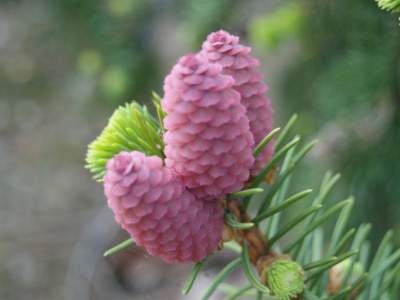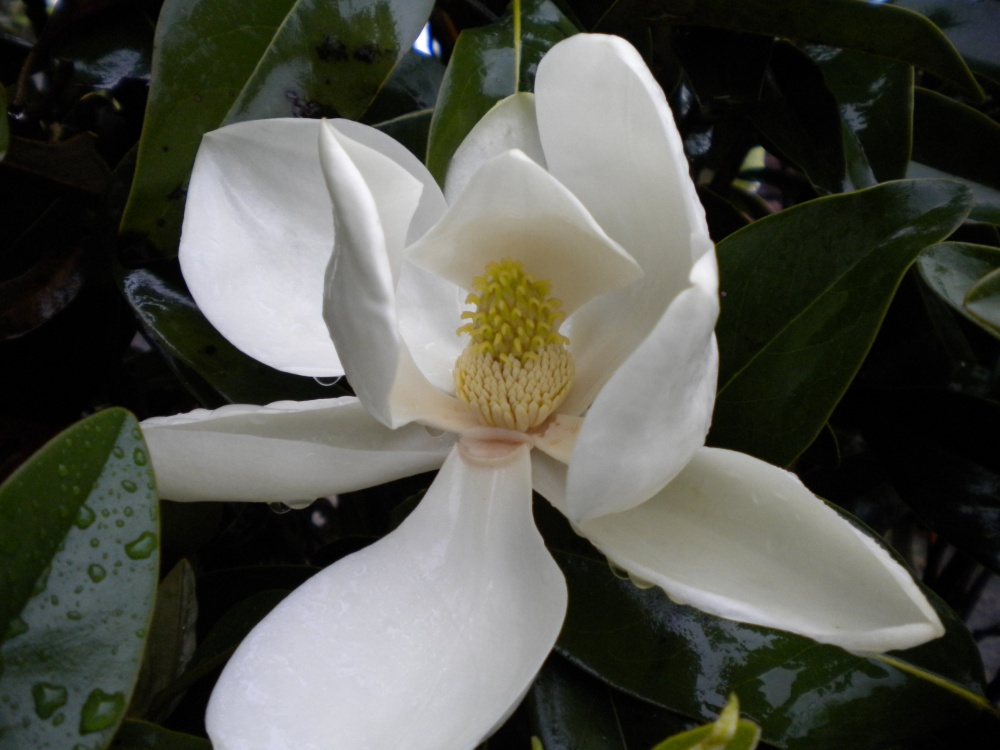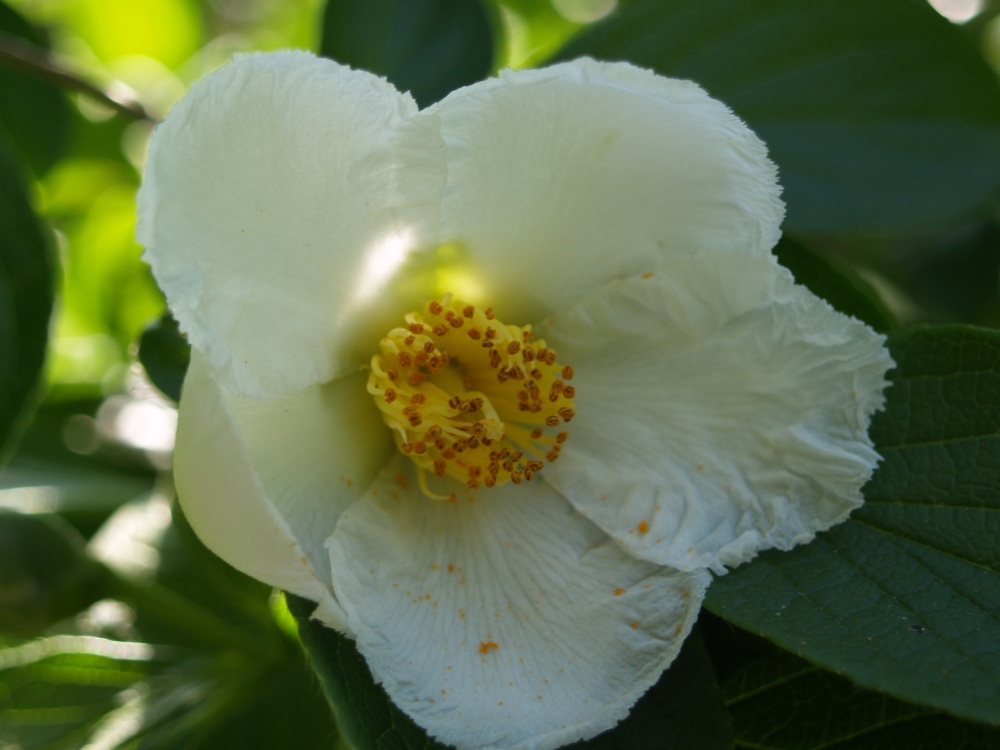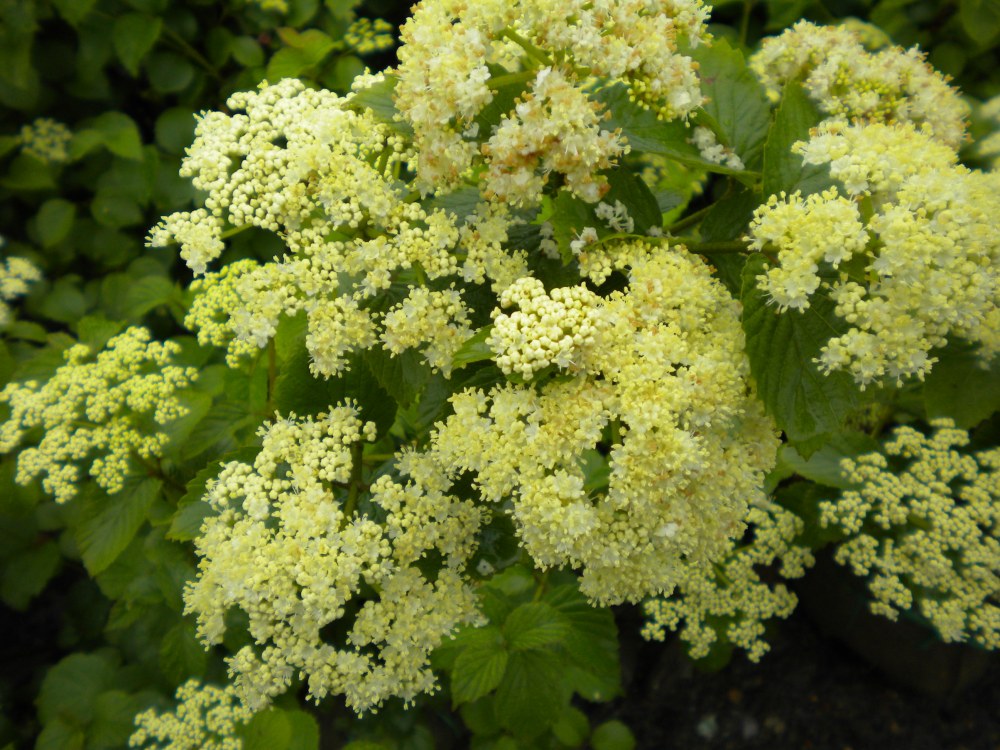This week I’m headed to Oregon. A surprising number of plants sold in garden centers in the mid-Atlantic and northeast are grown there. Mild temperatures and low humidity promote a long growing season without the stressful heat and humidity of the east coast. Even when temperatures reach triple digits on rare occasions in the Summer, nighttime temperatures tumble.
The northwest states, and in particular Oregon, are recognized as prime growing areas for Japanese maples and conifers, but rich  soils also provide ideal conditions for growing laurels, pieris, and boxwoods that are slow or difficult in other areas. My purpose for traveling west is to identify plants of the best quality and value that warrant shipping cross country to Meadows Farms‘ garden centers in Virginia, West Virginia, and Maryland. This trip will result in a hundred or more tractor trailer loads of plants being shipped.
soils also provide ideal conditions for growing laurels, pieris, and boxwoods that are slow or difficult in other areas. My purpose for traveling west is to identify plants of the best quality and value that warrant shipping cross country to Meadows Farms‘ garden centers in Virginia, West Virginia, and Maryland. This trip will result in a hundred or more tractor trailer loads of plants being shipped.
It’s easy to love Oregon, expecially in June after the rainy season has ended. It’s a wonderful agricultural state, with tree, shrub, and grass seed nurseries, strawberry, blackberry, cherry, and raspberry farms around every turn. If the timing’s right there’s a pick-your-own or roadside stand with freshly picked berries every mile or two. I’ll try not to eat too many and ruin my appetite for dinner.
 The Oregon nurseries offer an amazing variety of color, from deep red Japanese maples to bright yellows and blues that often fade in the heat of the east coast. I’m a kid in a toystore, drooling over the maples and conifers that I collect for my own garden. I’ll be taking my pocket size camera, hoping to break from business long enough to document this adventure.
The Oregon nurseries offer an amazing variety of color, from deep red Japanese maples to bright yellows and blues that often fade in the heat of the east coast. I’m a kid in a toystore, drooling over the maples and conifers that I collect for my own garden. I’ll be taking my pocket size camera, hoping to break from business long enough to document this adventure.
Meanwhile, the weather in Virginia has been great for plants and ducks. More than ten inches of rain fell in May, and half that the first week of June. Moderate temperatures have encouraged growth, and I’m afraid when I return next week I’ll have to hack my way through the garden paths with a machete.
Reading but a few chapters this Spring I’m certain you’ll agree that I’ve gone around the bend for flowering trees, and perhaps gone a little mad for collections of this, that, and everything else. The last of the magnolias to bloom is the great evergreen Southern Magnolia (Magnolia grandiflora). There are only three in the garden, two somewhat columnar sorts, Alta and Greenback, and the extremely cold hardy Bracken’s Brown Beauty.
Three should be plenty, since goodness knows what to do in another ten years when they reach forty, then fifty feet. They have been given nearly enough room to spread, with only small neighbors that can be moved rather easily (who will move them remains a mystery). The bloom shown here is from Alta, which does not flower heavily, but grows quite full with pointed, smaller than average leaves (a distinct improvement over the open growth habit of the popular D.D. Blanchard).
I haven’t the gumption to grow another magnolia, but Little Gem would be the next in line, with its smaller size and reblooming through the Summer, sometimes until frost. Flowers of all the Southern magnolias have a pleasant citrus scent (similar to many floor cleaning solutions), and leaves are large and glossy.
Though the Southern magnolias are the last of magnolias to bloom in this garden, Jane has reset buds and will begin to flower sporadically until frost. Much more prolific in bloom will be the Stewartia pseudocamellia (above) , with hundreds of buds waiting to burst open as soon as the sun makes an appearance this weekend.
, with hundreds of buds waiting to burst open as soon as the sun makes an appearance this weekend.
I have noted that beech (Fagus) is notoriously slow in becoming established after transplanting, but Stewartia matches this snail’s pace. I planted a thin six foot tree perhaps a decade ago, and it was only a year ago that there was any perceptible growth. Now, the long branches arch under the strain of the flower buds and the dampness.
Seemingly everyone in the nursery trade has a Stewartia story, though the stories seem quite familiar. It is a very popular tree amongst plant lovers and nurserymen, and each has a beautiful speciman that has remained in the garden center, unsold for years. Too slow, and thus too expensive for everyday commerce.
Likewise, I must pick up the pace, and put a wrap on this week’s journal. Today will end with Viburnum dentatum, rather unremarkable to me except that it is bulletproof filler on the border of the woods’ edge. Flowers are not fragrant, but the clusters are large and cover much of the shrub. Actually, probably nicer than I give credit for.
There is still much ground to cover before I travel. Many weeds sprouting after most of a week of rain, lawn to be cut, and the next round of deer repellent to spray when the sun shows itself. In the interest of brevity (actually to keep this entry short of book length) hydrangeas and daylilies, a look at the swimming pond in full iris splendor, echinacea, and others must wait for tomorrow.
Your garden, your journals and pictures are magnificent… WOW!